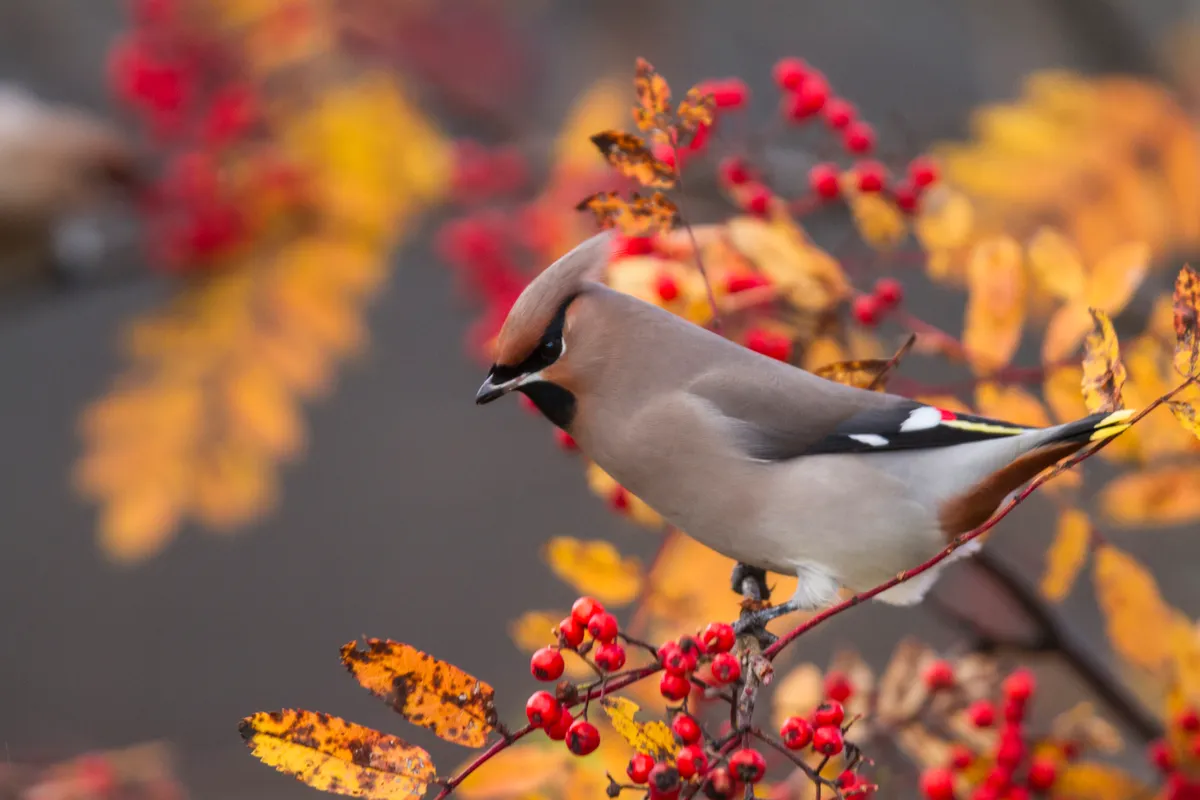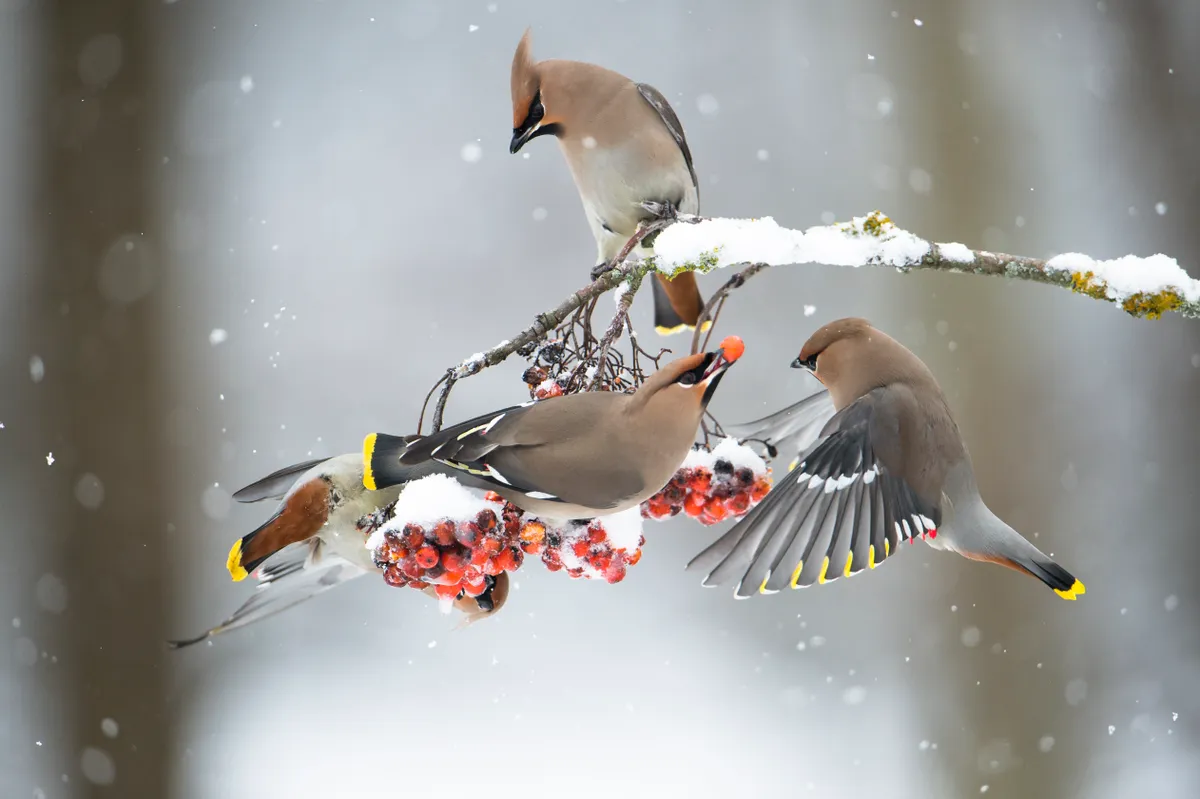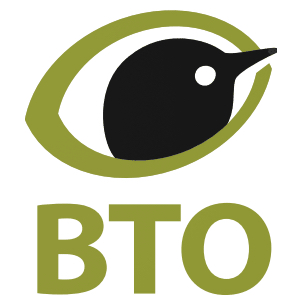Normally just referred to as the ‘waxwing’ in the UK, the Bohemian waxwing is a stunning bird that visits the UK during the winter in order to feed on berries. Whilst some are found every year, occasionally they arrive in large numbers.
How to identify waxwings

Waxwings get their name from the long glossy red tips to the feather shafts in the middle of their wings. They are starling-sized with peach-brown plumage and a characteristic crest. The tail has a yellow tip to it, as do the edges of the flight feathers on the wings, and they have a narrow black eye mask and chin, and a chestnut undertail.
When do waxwings visit the UK?
Waxwings only visit the UK in the winter, spending their breeding season in the boreal forest belt that stretches from Scandinavia, through Russia and across parts of North America. The numbers that reach us depend on the availability of berries on the Continent. In years where the abundance of berries is low, birds have to move away to find food elsewhere.
What is a waxwing irruption?
As the winter movements of waxwings are dependent on the amount of food available on the other side of the North Sea, the UK can receive anything from a few dozen individuals to as many as 12,000 each year. Most years we attract at least a few birds and they usually arrive from October and can be seen up until April.
Due to the breeding grounds being east and north of Britain, eastern and northern Britain get the highest numbers of waxwings during the winter. In years where many birds arrive, they tend to disperse further south and west throughout the winter as they deplete the berry crops.
A particularly good year for birders, where there are a lot of waxwings visiting the UK, is called a waxwing winter, or an irruption.
If you’re interested in following where waxwings are being seen, the Twitter account @WaxwingsUK tracks and shares waxwing sightings.
How do waxwings use their crests?
The waxwing's crest is used principally for courtship, raised almost of the vertical as part of a wider display directed towards a potential mate.
The bird also lowers its tail and ruffles the feathers on its back, rump, belly and legs while adopting a near-horizontal posture.
The display is very different from the stiff upright posture that a waxwing adopts when threatening a rival, in which the crest remains flat to the had.
The use of a crest for courtship is seen in many bird species, with some developing particularly elaborate plumage.
The crest may also be used in threat display, perhaps communicating the socially dominant status of the individual making the threat and resolving the confkuct without recourse to physical violence.
On occasion, the display may even be directed towards a different species.
What do waxwings eat?

Berries are incredibly important for waxwings in the winter and they typically eat 800-1000 berries a day, roughly twice their body weight!
Our native rowan is the favoured plant of waxwings, but they will take other native and non-native Sorbus berries, including hawthorn, cotoneaster and rosehips. If they’re in the area and you don’t have berries, they can be attracted into gardens using halves of apples hung from a tree. Supermarket car parks are a classic place to see these birds as they often have ornamental shrubs with berries.
In the breeding season, however, they feed mostly on mosquitoes and midges so it is not unusual to see birds that are still here in the spring feeding on insects, flowers and tree buds.
What is the scientific name of the Bohemian waxwing?
The scientific name of the Bohemian waxwing is Bomybilla garrulus.
How many waxwing species are there?
There are three waxwing species in total: the Bohemian waxwing (B. garrulus), the Japanese waxwing (B. japonica) and the cedar waxwing (B. cedrorum).
Main image: A Bohemian waxwing hanging onto a tree. © Viсtor Dubinkin/Getty
